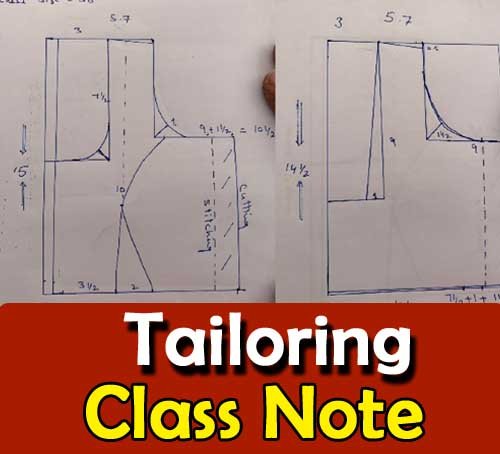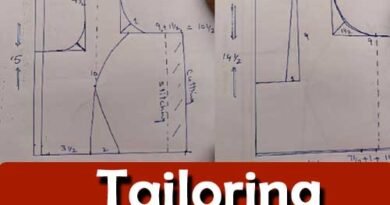Types of Fabric Defects
Types of Fabric Defects
Unit Objectives
At the end of this unit, you will be able to:
Understand different types of defects
Find and rectify the defects
Identify different types of faults
Categories of Defects
Defects are categorised under three main areas
Critical defect: A defect which makes the garment unsafe for individual consumption or it contravenes any mandatory regulations
Major defect: An obvious defect in the appearance which reduces the usability and sale ability of the garment
Minor defect: A defect which is caused by a workmanship error beyond the quality standards but does not reduce the sale or consumption of the product
| Fabric Defects | Major | Minor |
| Different Weight /handle of fabric than approved sample | HOLD | |
| Different Weight /handle of fabric than approved sample | M | |
| Drill hole showing | M | |
| Fabric faults not evident on sample (eg: cuts,holes, tears, thinSpots,runs,mispicks slubs,snags, nepping,Weaving faults) | M | m |
| Hole created in fabric when ticketing | M | |
| Pattern, stripes, checks do not match as specified | M | m |
| Permanent creases on fabrics, streaks, parre | M | m |
| Bowing or skewing on plain fabrics more than 2.5 cm per garment width or length | M | |
| Bowing or skewing on plain fabrics up to 2.5 cm per garment width or length | m | |
| Nap or pile deformation | M |
| Shading Defects | Major | Minor |
| Shade variations between panels | M | m |
| Shade variations of garment fabric and trims within the garment | M | |
| Shade variations of garment fabric and trims within the garment | HOLD | |
| Dye streaks & barre marks at critical zone | M | |
| Different batches within the order | Comm’t | |
| Cleanliness | Major | Minor |
| Spots. Stain and soil marks | M | |
| Threads ends untrimmed | M | |
| Excessive fly or contamination on garment | M | |
| Component Parts and assembly | Major | Minor |
| Missing parts | M | |
| Missing operation | M | |
| Operations not done per approved sample and specification | M |
| Misalignment of parts, pockets, flaps,trims more than 7 mm | M | |
| Inconsistent nap directions if specified | M | |
| Seams and Stitching | Major | |
| Open seam | M | |
| Skipped chain stitch | M | |
| Incomplete seams (two or more stitches) | M | |
| Double stitching gap 5 mm or more | M | |
| Needle holes | m | |
| Needle damage | M | |
| Garment parts caught in unrelated seam distorting fit appearance | M | |
| Improper stitch tension that affects appearance | M | |
| Raw edges (other than specified) out side | M | |
| Edge stitching irregular affecting appearance | M | |
| Untidy mending | M | |
| Piecing or joining of binding on critical zone of garments | M |
| Monofilament yarns being used as a sewing thread in any stitching / including label stitching | M | |
| Seam twisted , puckered or pleated affecting appearance | M |
| Pressing | Major | Minor |
| Burned or scorched | M | |
| Over pressed to leave seam impression | M | |
| Stretched or distorted during pressing | M | |
| Excessive wrinkles that require pressing | m | |
| Sericus shine caused by improper pressing | M | |
| Pressed poorly or not pressed at all | M | |
| Over Pressed on improperly finished to deform shapes, designs | M | |
| Label, Hangtags and Embroidery | Major | Minor |
| Missing or wrong tags , hangtags, price tags etc. | M | |
| Missing care, content and country or origin and main label | M | |
| Hangtags insecurely attached or misplaced | M | m |
| Wrong main label | M | |
| Label sewn with monofilament yarn | M | |
| Label sewing thread does not match colour of the garment | M | |
| Label sewing seam jneven , puckered and 5 mm away from Label edge | m | |
| Harsh and stiff label compared to approved label (Children wear) | M | |
| Harsh and stiff label compared to approved label (adult wear) | m |
| Label omitted or insecurely attached | M | |
| M | ||
| Fibre label does not meet labelling legal requirement | M | |
| Pockets | Major | Minor |
| Not in specified location more than 7 mm | M | |
| Shaped poorly | M | |
| Sewn crooked | M | |
| Not of specified size and shape | M | |
| Edge stitching not uniform | m | |
| Flaps not properly placed | M | |
| Puckers at flat joints | M | |
| M | ||
| Collars and Cuffs | Major | Minor |
| Fullness or puckers at collar attachment | M | |
| Collar points not uniform and balanced | M | |
| Serious puckers at collar attachment | M | |
| Misaligned or crooked collar settings more than 2 mm | M | |
| Misaligned or crooked collar setting less than 2 mm | m | |
| Puckered or crooked top stitching | M |
| Closure | Major | Minor |
| Buttons missing or damaged | M | |
| Buttons misplaced or misaligned causing poor appearance | M | |
| Buttons not sewn securely | M | |
| Buttons not in specified. Type or colour | M | |
| Buttons holes omitted or added | M | |
| Buttons holes uncut | M | |
| Buttons holes not sewn securely (easily unravels) | M | |
| Defective snaps or fasteners that do not function | M | |
| Misalignments of fasteners causing bad appearance | M | |
| Snaps or grommets that are not properly set | M | |
| Snaps that do not fasten properly or release very easily | M | |
| Improper sippers setting causing wavy and bumpy appearance | M | |
| Wrong size , type or colour zippers | M | |
| Defective zipper sides | M | |
| Defective zipper stops on open front jackets | M | |
| Tight clearance between slides and seam edge causing difficult slider operation | M | |
| Rivets not properly and securely set | M | |
| Rivets with rough edges | M |
| Finishing and Hand-feel | Major | Minor |
| Permanent Wrinkles or deformation on the garment | M | |
| Folding and Packaging | Major | Minor |
| Not as specified per product specification | M | |
| Measurements | Major | Minor |
| Any measurements beyond specified tolerance | M | |
| Design and colour way | Major | Minor |
| Not according to approved sample or specification | HOLD | |
| Weight | Major | Minor |
| Beyond specified tolerance | M | |
| Less than specified tolerance | HOLD | |
| Gauge | Major | Minor |
| Knitted on different gauge machine | M |
| Shipping Carton Mark | Major | Minor |
| Wrong or incomplete shipping carton markings | HOLD |
| S NO | Critical Defects |
| 1 | Loose components:Trims and fasteners those are used in the garment but not secure properly. For example , buttons, snaps, stones etc |
| 2 | Sharp edges: During the processing of the garment it come in contact with various sharp metals such as needles, staples, Broken needles, damaged and broken snap buttons, rivets, wire and pins. |
| 3 | Drawstrings at head or neck for baby or kinds products. Draw string must be avoided in kids clothes. |
| 4 | Thread or trims which are extensively long or loose |
Factors to be Considered
Factors to be considered for classification of defects



